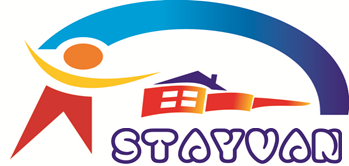India’s booming FMCG industry

What is FMCG?
Fast Moving Consumer Goods (FMCG) are a specific category of consumer goods that are sold quickly and at a relatively low cost. They’re called ‘Fast Moving’ because they move through the value chain very quickly – from production, distribution and marketing to the point of final consumption. Common examples of FMCG are packaged foods, soft drinks and other beverages, cosmetics and personal care products, stationery, toiletries, etc. They’re sold all too quickly either because of high demand (sanitisers are a good example – especially during current times) or because they’re perishable (dairy products, confectioneries, etc).FMCG in India
The FMCG industry is the 4th largest sector of the Indian economy, behind the services, manufacturing and agricultural sectors. Within the FMCG space, there are 3 broad categories – household and personal care products, healthcare products, and food & beverages.Growth drivers of FMCG in India
As we’ve discussed already, should India continue to grow, the FMCG sector will be set to see handsome growth due to the nature of the industry and its vitality in the overall well being of the economy. Let’s look at some of the biggest growth drivers of FMCG in India…The rural growth story
Interestingly, roughly 12% of the world’s population lives in the villages of India. Simply put, 1 in roughly 8 people in the world is an Indian villager. What’s even more striking is that 50% of the Indian rural population is under the age of 25. Rising incomes leads to rising aspirations. The power of the internet has made rural India more accessible than ever, and FMCG companies are eagerly trying to cement their presence and stronghold in rural India. This trend is already taking shape, as rural FMCG sales growth has already outpaced its urban counterpart.Over 50% of rural household incomes are spent on FMCG products, and having well-known companies enter the market will only mean that more and more people from rural India will shift to branded products. Thus rural India provides a huge untapped market for FMCG firms in the country.Currently, rural India relies on the unorganized market for FMCG products. This trend is shifting as FMCG firms enter the rural market as people in rural India become more brand-conscious. The rural FMCG market in India is expected to grow to US$ 220 billion by 2025 from US$ 23.6 billion in FY18. Note: The Rising Rural Demand smallcase constitutes of companies that stand to benefit from increasing rural consumption. Investors can view the smallcase by clicking on the link.
Innovation is key
‘Fast Moving’ is the very nature of the products sold under this segment. That also means that companies have to be really quick to adopt new strategies that help expand their market share. With stiff competition, companies that focus not only on the quality of the product but also are on the constant lookout to innovate and come up with new products are the ones that are set to grow. And our FMCG sector is doing quite well on this front! For example, companies were very quick to adapt to changing consumer preferences during covid.The shift to healthy alternatives and products that promoted hygiene were being rolled out at an unprecedented rate by FMCG companies. Reports suggested that over 1800+ health and hygiene products were launched in the first 6 months of the pandemic.Firms are innovating in other ways to increase their presence in the market share. As already discussed, rural India presents a huge market for firms. However, products that work in urban areas will not necessarily work in rural areas due to differential preferences and lower incomes. Firms in the FMCG sector are introducing smaller packages of the same products in rural India to match rural incomes. Pretty cool, right?
E-commerce and the online market place
The advent of e-commerce and the online market place since 2015 has turned out to be a game-changer for the FMCG market. This is mostly because the online market place has helped companies with distribution – the kind that was not possible with offline stores. Moreover, launching products online is much cheaper than launching products offline. Many FMCG firms now look to launch online-only products as an experiment – just to gauge the response/feedback of consumers regarding the product. Positive/better-than-expected responses lead to an offline launch of the product as well. Moreover, e-commerce has also helped firms penetrate tier-II and tier-III cities as well, which were otherwise left out of the product markets. [poll id=”3″]The way forward…
The high growth rate of the FMCG industry in India goes beyond growth drivers such as income growth and urbanisation. The ever-changing preferences of India’s new-age consumers have resulted in an attitudinal shift in the market. India in 2030 will have 37 crore generation Z consumers, with changed priorities when it comes to purchasing goods. The new Indian consumer will be more aware than the previous generations, and they are expected to have an affinity for health and nutrition along with high disposable income. Apart from the growth drivers mentioned above, government support is imminent in ensuring the growth of this industry. Working in that direction, the government has approved 100% FDI in the cash and carry segment and in single-brand retail along with 51% FDI in multi-brand retail. Moreover, the Goods and Services Tax has proved to be beneficial for the FMCG industry as many of the FMCG products such as soap, toothpaste and hair oil now come under the 18% tax bracket against the previous rate of 23-24%. Also, GST on food products and hygiene products have been reduced to 0-5% and 12-18% respectively. These simultaneous developments have paved the way for the FMCG industry to grow at a rapid pace and cater to a new age in India that will empower its consumers like never before. Keeping this in mind, the FMCG tracker smallcase was built, that helps investors efficiently track and invest in the FMCG sector.
****



























































